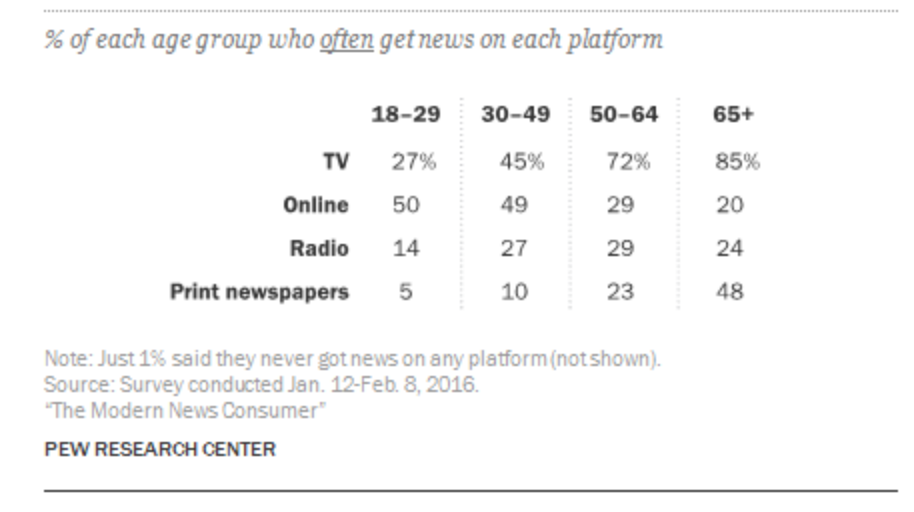2018 could mark a tipping point: The first time that the percentage of Americans who regularly get news online exceeds the percentage who get news from television. Last year, we were almost there.
The number of Americans who regularly get news from television fell again between 2016 and 2017, Pew noted Friday, from 57 percent at the beginning of 2016 to 50 percent in August 2017. While local news saw the biggest decline, it also still has the largest audience:

It’s primarily older people who get their news from TV — for instance, 58 percent of those over 65 often get news from cable, versus just 10 percent of those 18 to 29. Adults who’ve completed college are less likely to get news from local and network TV, though Pew didn’t find a correlation between level of education and watching cable.
"just 8% of those ages 18 to 29 often get news from network TV"
(for the 18-29 yo segment TV as news consumption is basically dead)https://t.co/7IVp3OuXx2 pic.twitter.com/gIWkDZrXv3
— Fabio Chiusi (@fabiochiusi) January 5, 2018
These are big drops. Here’s what Pew found in early 2016 when it calculated the number of Americans who “often” get news from TV (note that that survey lumped network, local, and cable TV into one category):

A few news bits that relate to this trend:
— Local TV is still more popular than network or cable TV, which helps explain why Sinclair still wants to buy Tribune.
— People who might once have all turned on the same show at the same time are now turning to app-based live events like the HQ trivia app, which just topped a million players in a single game. “It’s maybe the only real appointment viewing across all of entertainment right now,” Amanda Hess wrote for The New York Times.
— Facebook Watch is adding late-night clips from CBS, reflecting a little desperation from both CBS and Facebook. (Watch is struggling to become seen as something other than Facebook’s version of YouTube: “Creators still have this mental model of the News Feed where only short-form, viral videos work, not realizing that something a little longer can find success on Watch,” Fidji Simo, VP of product at Facebook, told Fast Company recently. “That’s really the perception shift that we need to address in the next year, that publishers and creators will feel totally comfortable and excited in switching to this type of content on Facebook instead of just focusing on what works in News Feed.”)
Leave a comment